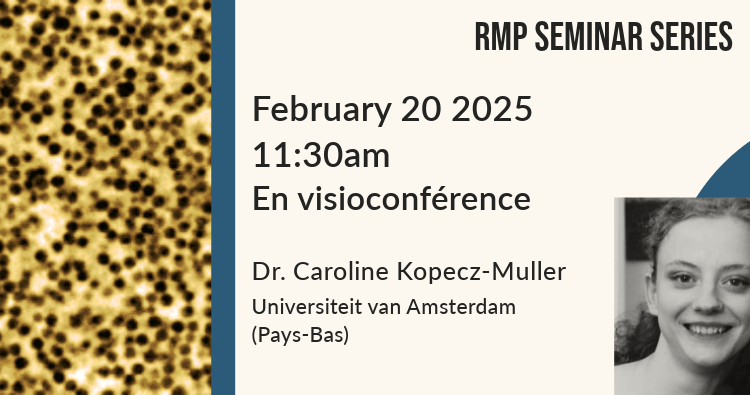
Séminaire RMP: Dr. Caroline Kopecz-Muller (UVA, Amsterdam)
From hydrogels to rotating squares assemblies : mechanics of soft and complex (meta)materials
Abstract:
Mechanical response of a hydrogel: from small deformations to the dehydration-induced glass transition.
When a rigid object approaches a soft material in a viscous fluid, hydrodynamic stresses arise in the lubricated contact region and deform the soft material. The elastic deformation modifies in turn the flow, hence generating a soft-lubrication coupling. Moreover, soft elastomers and polymer gels are often porous and can be permeable to the surrounding fluid, which complexifies further the description. In particular, poly-N-isopropylacrylamide (PNIPAM) hydrogels swell by a few hundred percents in thickness when brought into contact with a solvent. Here, in a first part, we derive the point-force response of a semi-infinite and permeable poroelastic substrate. Then, we use this fundamental solution in order to address the specific poroelastic lubrication coupling associated with contactless colloidal-probe methods. In particular, we derive the conservative and dissipative components of the force associated with the oscillating vertical motion of a sphere close to the poroelastic substrate. In a second part, we present Surface Forces Apparatus (SFA) experiments, in sphere-on-flat mode, performed on initially fully swollen PNIPAM nanometric films. Together with modelling efforts, the progressive approach and indentation of the gel enables to highlight a succession of several different mechanical responses. From a regime with no gel-probe interaction, the hydrogel first undergoes a gentle deformation of its surface in a lubricated regime. Then, the indentation of the probe in a contact regime forces the expulsion of the solvent from the polymer matrix. We finally show that, at room temperature, the imposed mechanical load triggers the dehydration-induced glass transition of the PNIPAM. Our results are relevant for contactless colloidal-probe atomic force microscopy experiments, in the context of biomimetic systems and/or living systems, that exhibit complex and different responses depending on the stimulation conditions, such as cartilages or biological membranes.
Domain wall propagation in assembled structures of rotating squares
Metamaterials have been of increasing to design shocks absorbers, ensuring a deformation regime that preserves the indenting object and prevents damages. Until now, investigations have focused mainly on varying the geometry of structures rather than considering the mechanical properties of the material itself. More precisely, plasticity has been carefully avoided. In this work, we treat plasticity as a new design tool for metamaterials. Indeed, we observe that plasticity triggers the emergence of a transition wave in buckling, that propagates through the whole structure. Here, we exploit first a 2d-structure made of a chain of rotating squares and second a 3d-structure made of rotating octahedrons, to show regimes of inhomogeneous rotation upon compression, defining domains in the structure and propagating through it. We exhibit compression tests performed on 3d-printed structures that are compared to Finite Element Method (FEM) simulation results, based on an elasto-plastic description of the hinges. Additionally, we propose modelling ingredients describing the domain wall propagation in 2d structures, in accordance with observations made in FEM simulations. Finally, such concepts of system show resistance to a mechanical load while dissipating energy, which constitutes a key point to design efficient load absorbers.


